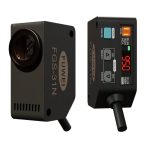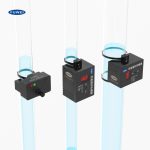In an era where precision and efficiency are paramount, mass flow sensors have emerged as unsung heroes in a multitude of industries. These sophisticated devices measure the mass flow rate of gases or liquids directly, providing critical data that ensures processes run smoothly, safely, and cost-effectively. From pharmaceutical manufacturing to environmental monitoring, the applications of mass flow sensors are vast and continually expanding. Their ability to deliver accurate, real-time measurements makes them indispensable in today’s technology-driven world.
At their core, mass flow sensors operate on principles such as thermal dispersion or Coriolis effect. Thermal mass flow sensors, for instance, measure flow by detecting changes in heat transfer from a heated element to the flowing fluid. This method is highly effective for gases and offers rapid response times. On the other hand, Coriolis mass flow sensors utilize the inertia of the fluid moving through oscillating tubes, providing exceptional accuracy for both liquids and gases. The versatility and reliability of these technologies have cemented mass flow sensors as critical components in systems where precision is non-negotiable.
The impact of mass flow sensors is particularly evident in the healthcare and pharmaceutical sectors. In processes like drug development and medical gas delivery, even the slightest deviation in flow rates can compromise product quality or patient safety. Mass flow sensors ensure that precise amounts of gases and liquids are administered, enabling manufacturers to maintain stringent compliance with regulatory standards. This level of accuracy not only enhances product efficacy but also minimizes waste, contributing to more sustainable operations.
Beyond healthcare, mass flow sensors play a pivotal role in environmental and energy applications. They are integral to emissions monitoring systems, helping industries track and reduce their greenhouse gas outputs. In renewable energy sectors, such as biogas production or hydrogen fuel cell technology, these sensors optimize flow rates to maximize efficiency and output. Their ability to function reliably in harsh conditions makes them ideal for challenging environments, from offshore drilling rigs to high-altitude atmospheric research stations.
Industrial automation has also greatly benefited from advancements in mass flow sensor technology. In manufacturing lines, these sensors provide real-time data that allows for dynamic adjustments, reducing downtime and improving product consistency. Whether it’s controlling the flow of chemicals in a semiconductor fab or managing coolant in automotive production, mass flow sensors enhance operational agility and reduce human error. Their integration with IoT and Industry 4.0 platforms further enables predictive maintenance and data-driven decision-making.
Looking ahead, the future of mass flow sensors is brimming with potential. Innovations in materials science and microfabrication are paving the way for smaller, more affordable, and even more accurate sensors. These developments will likely unlock new applications in fields like consumer electronics, aerospace, and smart agriculture. As global challenges such as climate change and resource scarcity intensify, the role of mass flow sensors in promoting efficiency and sustainability will only grow more critical.
In conclusion, mass flow sensors are transformative tools that bridge the gap between theoretical precision and practical application. Their ability to provide reliable, real-time data empowers industries to operate with unprecedented accuracy and efficiency. As technology continues to evolve, these sensors will undoubtedly remain at the forefront of innovation, driving progress across countless domains and shaping a smarter, more sustainable future for all.




Leave a Message